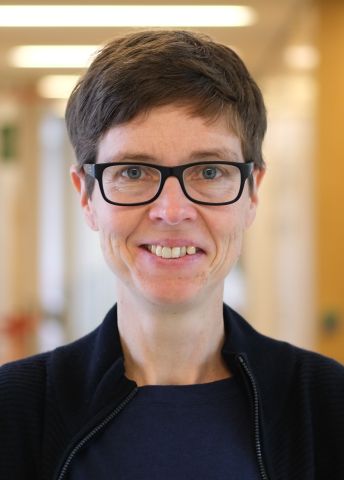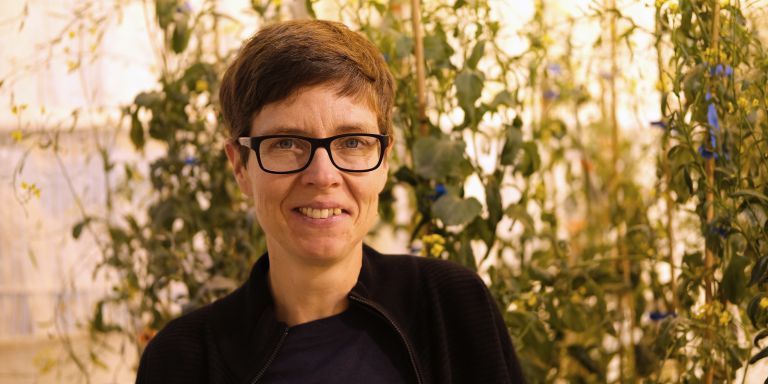
Claudia Köhler
Professor of Molecular Cell Biology
Wallenberg Scholar
Institution:
Swedish University of Agricultural Sciences
Research field:
Molecular plant cell biology


Wallenberg Scholar
Institution:
Swedish University of Agricultural Sciences
Research field:
Molecular plant cell biology
What enforces the evolution of new species, and what caused the rapid evolution of flowering plant species in the past? These questions also occupied Charles Darwin, but strides made in genetic engineering in recent years may give us an answer.
Köhler is working to achieve a better understanding by combining molecular biology, epigenetics and genetics with evolutionary biology. And she is seeking the answer in the endosperm – the plant “placenta”.
“There is of course much we still don’t understand, but we now know much more about the barriers that are created to prevent some kind of cross-hybridization. We have found that mobile genetic elements play a key role,” she says.
Hybridization barriers can be established in the endosperm, preventing closely related species from generating viable progeny. Köhler’s research has shown that those barriers are likely connected to “jumping genes”.
Jumping genes are called transposons, and were discovered as long ago as the 1940s by Barbara McClintock when she was studying chromosome changes in corn (maize). Several decades later transposons were also found in other organisms, and there is now a considerable body of research into their function in humans and other animals. In plants, it has been recognized that transposons control important developmental pathways, but the extend of this remains to be discovered.
Transposons are essentially pieces of DNA that can change places. But their tendency to jump about is a threat to the organism, since they can damage other genes or impact their function. For that reason, transposons are generally kept silenced by epigenetic mechanisms. However, during plant reproduction there is a partial reactivation of transposons, which possibly leads to incompatibility when the difference between parental transposons is too great.
“We are particularly interested in understanding the role of transposons in establishing hybridization barriers. Some years ago we discovered a link between transposons and the phenomenon of genomic imprinting. We could see how the phenomenon helped to create barriers, and that the genes involved were often found in the vicinity of transposons,” Köhler explains.
Genomic imprinting is a phenomenon whereby certain genes are differently expressed, depending on which parent they come from. The discovery that genomic imprinting can affect the barriers to hybridization laid the foundation for a new field in Köhler’s research lab.
Imprinting is the result of epigenetic mechanisms acting during gamete formation, which establish epigenetic modifications on transposons. Köhler now intends to understand the connection between transposons, imprinted genes and hybridization barriers.
“The question is whether by mobilizing transposons we can generate hybridization barriers, which would establish evidence for the central role of transposons in this process. It would be amazing if we could,” Köhler says.
Another factor that can lead to raised barriers is the presence of certain small fragments of RNA that originate from the transposons. Köhler will be endeavoring to find out how these fragments are created and what part they play in endosperm development.
“The Scholar grant from Knut and Alice Wallenberg Foundation gives me an economic freedom that will enable me to undertake research whose outcome is uncertain.”
If the research results in a new way to control the hybridization barriers, this might simplify plant breeding. This could in turn be hugely important as new crops are developed to cope with climate change.
“Our modern crops are adapted to today’s climate, so we need to find ways of adapting them to future climate change.”
The research is very much technology-driven; it owes much to new methods of DNA sequencing such as single-cell analysis, offering the potential for rapid progress. The benefit gained from swiftly embracing new technology became clear to Köhler during a year she spent working in the U.S. during her studies.
“It was there that I learnt to use new genetic engineering techniques, and also how research works in a highly competitive environment. Becoming a biologist was my childhood dream, so that has given me an additional impetus.”
Having spent ten years at the Zurich University and ETH in Switzerland, she was offered a professorship at the Swedish University of Agricultural Sciences (SLU) in Uppsala. There she began building up her research team, which now comprises some 15 people. All of them are deeply committed to combining molecular biology, epigenetics and genetics to discover new interrelationships. She will move her research team to the Max Planck Institute of Molecular Plant Physiology in Potsdam, Germany in summer next year, but will remain affiliated with SLU.
She likens her research to detective work – a constant stream of new clues in the form of data, and never-ending analysis and reflection.
“The most exciting part is developing new hypotheses from our research, and then testing them to see if they are tenable. So far we’ve been quite successful, and as a Wallenberg Scholar I will now also be able to explore my more far-fetched theses,” Köhler says.
Text Magnus Trogen Pahlén
Translation Maxwell Arding
Photo Gerardo Del Toro De León